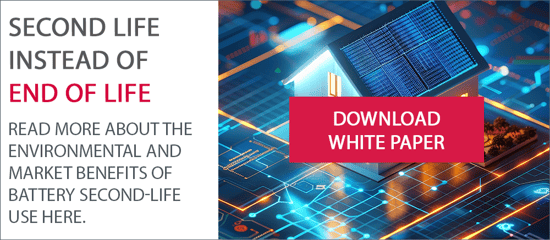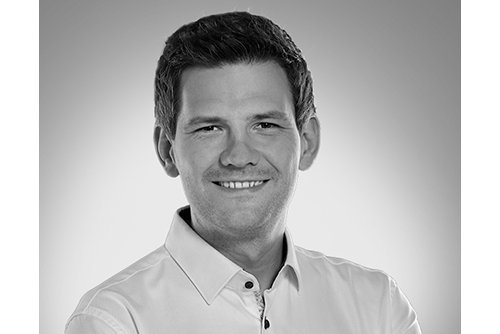As the battery in an electric vehicle ages, its capacity will eventually drop to below an acceptable threshold level. This does not, however, mean that the battery can no longer be used and needs to be recycled. There is still plenty of capacity for other applications. These batteries can still do more than ten years' service in electricity storage systems. Not just in large-scale systems – EDAG has developed a concept that uses them to create sustainable, attractively designed storage systems for domestic photovoltaic systems.
Worldwide, and despite a temporary dip in sales, electric vehicles are rapidly gaining ground. Their rapid rise also means that in eight to ten years' time, a correspondingly large number of traction batteries will be due for return – and at this point, if not sooner, the question will arise as to what to do with them. As things stand today, recycling is still on the increase. Battery technology at all levels is on the move, with many different technologies, designs and specifications being developed. This hinders automated recycling and pushes up costs. As a result, many players are on the lookout for viable business models. Spurred on by the EU Battery Regulation which was revised in 2023, the major OEMs in particular are working on return and recycling concepts.
Second life instead of recycling
In fact, however, batteries that have been replaced are still far too good to be recycled and the raw materials recovered. In the vehicle, the bar is set high: the threshold for battery replacement set by the manufacturer is usually 70 to 80 percent of the original capacity. In other words: a battery that has been replaced is not generally defective, but simply offers reduced performance or capacity. As there are applications for which a lower capacity is perfectly acceptable, it can be put to a second use before undergoing final recycling. An extended service life also stands for improved sustainability.
A typical second-life scenario is its use in large electricity storage systems to stabilize the grid or cushion peak loads. Examples include a test plant by Audi and EnBW at the combined heat and power station in Heilbronn, and a project carried out by TransnetBW, which is scheduled to go into operation with a capacity of 250 MW by 2025. 
Here, the batteries could last even longer than in the vehicle. Intelligent operational management means that the battery is under far less stress than it is in a car, as charging and discharging are slower than in a vehicle, where strong acceleration, recuperation and operation in extreme heat or frost can affect the cell chemistry. Consequently, experts expect that it will take some 10 to 12 years for the battery to reach the end of its second life.
Electricity storage units for consumers
The concept is interesting not only when it comes to large-scale systems, but also – at least in theory – for the consumer segment, where demand is keen: According to Statista, from 2022 to 2023, the number of photovoltaic systems operated in conjunction with an electricity storage system in Germany doubled to some 1.2 million. Instead of expensive, brand-new rechargeable batteries, systems with "second-life batteries" could also be used here.
The decision as to whether this theoretical concept can be turned into a practical application hinges on the conflicting interests of economy, ecology and market acceptance. In order to explore this, EDAG joined forces with partners and set up the "DigiPrime" project, which is funded by the EU and seeks to address a wide range of challenges. Another aspect here was to develop and evaluate suitable test methods for the time- and cost-efficient characterization of the battery modules (including their state of health) and processes for dismantling and handling second-life modules.
The project included the development of a data platform for battery systems to enable continuous data chains, offer digital services and network the many players in the value chain. In addition, sustainable ways of using not only the batteries but also other vehicle components and materials were developed, which increases economic efficiency while also improving the ecological footprint.
Technical details
As vehicle batteries come in countless different designs and it is often not possible to dismantle them down to cell level without destroying them, the decision was made to reuse them at module level. The battery modules are connected both in series and in parallel so, that the desired capacity can be provided with a system voltage of 48 V. To control the DC-coupled storage system and serve as an interface with the inverter, an electronic unit (BDU) predominantly constructed from reused automotive components was developed. The central element of the storage system is EDAG's own battery management system (BMS), which is able to communicate with a large number of modules in current electric vehicle batteries. This means that the concept is not restricted to a single module variant.
Parts of the original battery housing taken from a Porsche Taycan in the course of the project were used in the housing design. At the same time, it also proved possible to reuse other components such as the module screw connections, parts of the signal cable harness including connectors and busbars. The housing cover, which is made from a laminate consisting of ground glass fiber from rotor blades of decommissioned wind turbines, also scores additional ecological points. The recycled fiber cover offers a great deal of freedom in design, adding to the sustainable look of the storage system. 
High-level sustainability
Some 90 percent of the mass consists of reusable and recycled materials, with battery modules accounting for half of this. Accordingly, new materials account for just 10 percent of the total mass. A sustainability assessment using a quick life cycle assessment (Q-LCA) shows that, in a cradle-to-gate analysis, the carbon footprint of this solar storage system is around 80 percent lower than a reference system made entirely of new parts.
In addition to an attractive design, this significantly reduced "CO2 rucksack" could also be a strong marketing argument. Of course, the price also plays an enormous role in determining just how competitive such systems are. With the "DigiPrime" project, the foundations have been laid for succeeding amid the conflicting interests of economy, ecology and market acceptance.
And this applies not just to consumer applications. With the home storage systems, EDAG has gained extensive experience in the field of second-life applications, while also providing proof that the utilization concept works. This know-how enables EDAG to cost-efficiently scale these processes in combination with (semi-automated) test and dismantling concepts. This lays the foundation for the next evolutionary stage, namely large-scale storage systems in the MWh range and suitable for industrial use.
Second-life use also gives OEMs the chance to keep their batteries on the market for a decade longer, buying them time to continue developing and expanding recycling concepts, technologies and capacities.
Just as the quick life cycle assessment (Q-LCA) tool developed in-house does, this energy storage concept demonstrates EDAG's commitment to sustainable development and production. If you are interested in the "DigiPrime" project or looking for further ideas on the subject of battery systems and sustainability, please contact Dr. Andreas Viehmann, Head of Innovation Area Drive and Storage Technologies at the EDAG Group. Or download our white paper "Batteries: Second Life instead of End of Life" here for more details of the development of sustainable electricity storage systems. 





